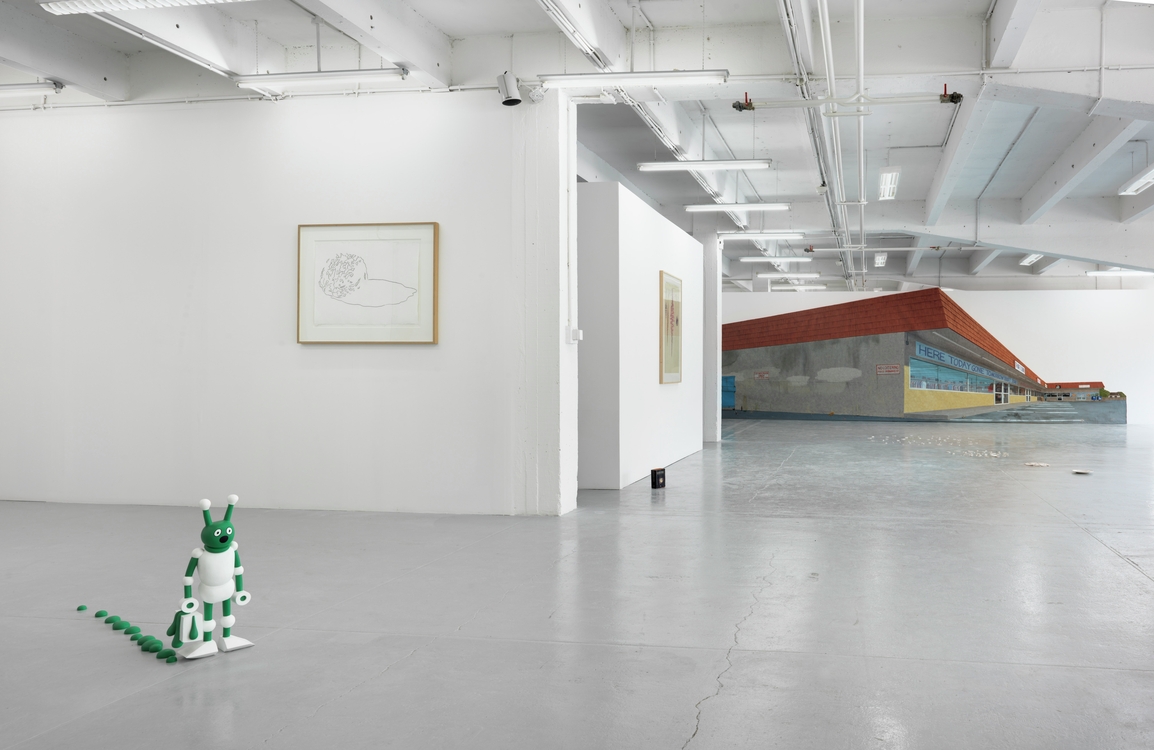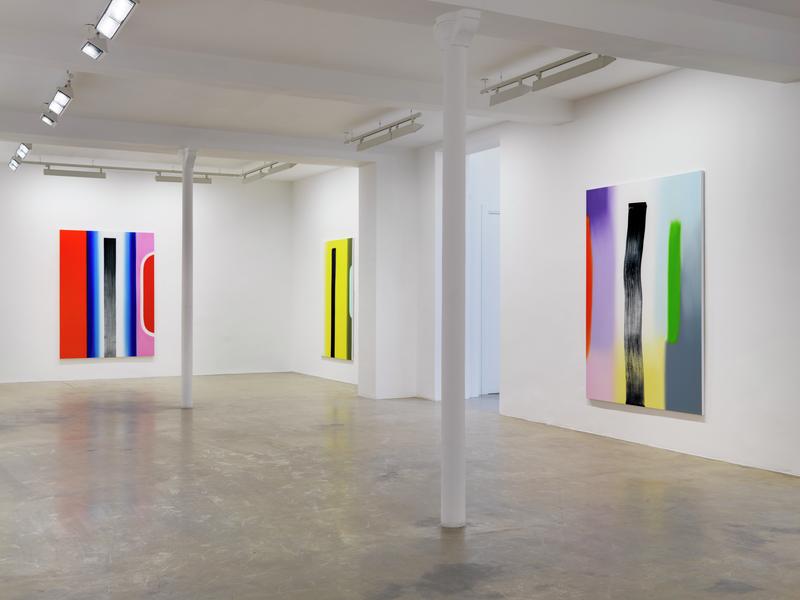Until the Fall
Ten paintings by Alain Séchas. Ten vertical formats. Nothing else. No sculpture, no technology, no sound. And no cats either, no Martians. No Couéism.
Acrylic paint on paper meticulously mounted on canvas. The white edge of the paper is visible. So is the canvas.
So, painting. Very colourful paintings. Interlacings in which the form chases its tail until it’s out of breath. Detailed painting, dense and devious. Images in which, at first glance, nothing seems preconceived or pre-meditated. Rather, a loss of control with gesture oscillating between virtuosity and awkwardness, between tension and release: a vertical journey not lacking in gravity.
So, ten paintings, and ten unlikely titles. Ten titles that will no doubt keep changing until the last minute. Ten titles rather than “untitleds,” but titles taken after the event. After the event of painting, it goes without saying.
Ten titles however, that, as I write, help me find my way. I can refer to them in order to understand some-thing. Séchas didn’t get us used to abstraction. Ten titles that go walkabout: Porte d’Italie, Mexico, Cardinaux and Hurons. And others I won’t mention. See for yourself. Ten titles that induce you to seek analogies between what they evoke and what you can see. That’s not easy when this really isn’t figurative and, on top of it all, if they change the moment you’re on to something. If our thoughts are vague and we make mistakes and get confused, I guess that must be just fine with Séchas.
Ten paintings executed on paper taped to the studio wall. Painted fairly fast, “depending on the degree of success,” says Séchas. But then what is the “success” of a work of art nowadays? When does the thing start to hold together? When do you move on to the next one?
Ten paintings whose speed of execution was no doubt variable, perhaps inconsistent. Different, at any rate, from that of the artist’s sculptures; closer, no doubt, to that of some of this drawings.
I look at these works. If I didn’t know who the author was I would find them jaunty and lively, almost joyous and light-hearted. Big colourful masses, strapwork, consummate skill: the man has technique. He has a deft hand. So it was Séchas who did that? What’s going on? I wonder. What is he getting at?
Here and there vaguely narrative elements emerge, close to things I know: eyes, ovoid forms, unlikely mandi-bles. But gone is the grammar of the earlier works, which are always somewhat restrained and subtle. Is Séchas letting go? Is he losing that caustic, deadpan humour of his? All that is effaced, erased, liquefied, so much so that I just don’t know what these paintings are saying to me? No witticisms, no caricatures.
Ridding oneself of one’s accomplishments. Unlearning, both for oneself and for whoever is looking. Not reas-suring him with what, over the years and at the shows, he had learned to recognise, but instead placing him before what Roland Barthes called “the terror of uncertain signs.”
It’s true, I’m uncomfortable. It can’t be easy to forget a skill. And it is just as difficult to try and talk about it. I keep looking. There must be some Séchas under all this.
Besides, I am not writing just to talk about this past, but to address the present. Exactly. I like these paintings a lot. In fact I wonder if another thing I like isn’t the fact that they make me uncomfortable and go against what I already know about Séchas’s work. Or what I think I know. Séchas is not easy. His work is often reduced to smooth, simple images. Séchas often has the violence of smoothness.
But there’s none of that here. It is both rough and lively. Full of denials and nonsense, full of signs forming and coming apart, seemingly put to the test by painting, negotiating or becoming diluted. Signs with the semantic fidgets, signs that slip and skate and sweat. It’s a physical thing.
I think of Mercier and Camier. I love them, those two. Their goal is not precise. “All we have to do is press forward.” And I think to myself that something similar must be going on here. Something far from gratuitous word games, and the desire that the practice of painting should become a way of revealing what is at stake by its very absurdity. Here there are lines that jump, holes, resumptions and affirmations that suddenly switch to contradictions.
In Malone Dies, Beckett writes: “And each one has his reasons, while wondering from time to time what they are worth, and if they are the true ones, for going where he is going rather than somewhere else.” There must be something of that in the pictures that Séchas is painting these days – standing up, facing himself with his back to what he has done. Yes, that’s it. Painting so as not to get backache. Until the fall comes.
Bernard Blistène
December 2009









